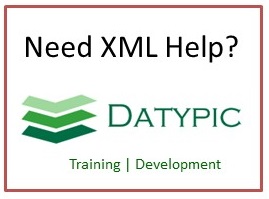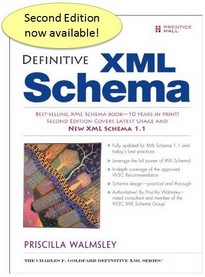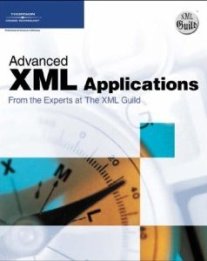toc
The table of contents for a measure or portion of a measure. The attributes of the toc element are used for regeneration of the toc within the authoring environment.
There are essentially two toc sub-models (toc-entries or multi-column-toc-entries). Both models are non-hierarchial in that the legislative structure is defined in an attribute rather in the structure of the toc itself. The toc-entries sub-model, the most common, is sequence of enumerators and headers from the measure's source using PCDATA. There is no distrinction between the enumerator and header elements within the toc-entry elements. The multi-column-toc-entries sub-model contain up to three columns of data per entry (toc-enum, level-header, and target or page-num). Both sub-models also support quoted-entry elements (ie.g., toc-quoted-entry and multi-column-toc-quoted-entry respectively).
Element information
Content
- Sequence [1..*]
- header [0..1]The header is the structure, often proceeded by an enum element that represents the "bold" text or heading of a subdivision or level. For example: the words “Short Title” in the phrase “Section 1. Short Title.” The text of headers is typed in sentence style casing (upper and lower case) so that the table of contents entries can be extracted from the body of the document. Display mechanisms (both print and on-line) will need to transform the casing of headers based on their legislative structure. Section headers display uppercased. Subsection headers display in a caps and small caps casing style where the first letter of the header is always uppercased; characters originally typed using uppercasing are caps and all other words are initial capped, except for the following words: a, an, and, as, at, but, by, for, in, of, on, or, the, and to. Levels below the subsection level are cased using caps and small caps, but maintain sentence style casing. For all other structural levels (e.g., division, title, subtitle, part, subpart, etc.), the casing is transformed to uppercase. In addition, any necessary punctuation and spaces following the header will be generated for display or printing. For example, when certain structures, e.g., Titles, Subtitles, Chapters, etc., follow OLC style, the display or print system will generate a centered header with no subsequent punctuation. For sections using OLC style, a generated period will follow the header, and for structures below the section level, a generated period followed by an em-dash will follow the header.
- instructive-para [0..1]Descriptive paragraph at the beginning of a table of contents.
- Choice [1..1]
- Choice [1..*]
- toc-entryThe words in a table of contents entry that contain the heading and enumeration of the structure for which this is an entry. For example, in the entry “Sec. 5 Underwater Resources”, everything between the quote marks is a toc-entry.
- toc-quoted-entryThe toc-quoted-entry element is a container for table of contents entries (toc-entry) that reside within a quoted-block container.
- Choice [1..*]
- multi-column-toc-entryContainer for multiple column table of contents entry. These are table of contents entries that typically contain a page number or target location.
- multi-column-toc-quoted-entryContainer used when a quoted toc entry has more than 2 columns as seen most often in the U.S. Code. The container includes an optional toc-enum and level-header followed by the page number or alternate target.
- Choice [1..*]
Attributes
| Name | Occ | Type | Description | Notes |
|---|---|---|---|---|
| container-level | [0..1] | Anonymous | Attribute to toc element. This defines the element the toc is for. For example, it's the toc for the legis-body. | |
| quoted-block | [0..1] | Anonymous | This container attribute for generating the toc indicates whether or not quoted-blocks are included in the toc. | |
| lowest-level | [0..1] | legis-structures-attributes | This is the lowest level container used in a generated toc. | |
| regeneration | [0..1] | Anonymous | A yes value allows the regeneration of the toc. | |
| lowest-bolded-level | [0..1] | Anonymous | The lowest-bolded-level tells composition which levels to bold through (e.g., subtitle). | |
| changed | [0..1] | Anonymous | Has this ENTIRE structural element (such as a Section (structure of legislation), Title (structure of legislation), etc.) been added or deleted?Note: Use the <added-phrase> and <deleted-phrase> elements for changes inside a structure that are less than the full structure.This attribute is used to mark entire structures that should be made typographically distinct because they have been added to or deleted from a measure. In contrast, the added phrase <added-phrase> and deleted phrase <deleted-phrase> elements are used to indicate changes within a structure that are less than the full structure, sometimes as little as a word, a number, or a few letters.A structure (such as a title or a section) that has been marked as changed using this attribute is usually presented in a different typographic style to indicate the change. Material that has been inserted (added) is typically in italics. Material that has been removed (deleted) is typically struck through. | |
| committee-id | [0..1] | xsd:anySimpleType | The id of a working subdivision of a chamber, which prepares legislation or conducts investigations | |
| reported-display-style | [0..1] | Anonymous | ||
| idref | [0..1] | xsd:IDREF | A pointer to the location referenced by the element. (Location is expected to be a URI.) | from group optional-internal-locator.att |
Used in
- Anonymous type of element committee-report-segment
- Anonymous type of element committee-report-part
- Anonymous type of element committee-report-title
- Anonymous type of element committee-report-para
- Anonymous type of element committee-report-subpara
- Anonymous type of element paragraph
- Anonymous type of element subparagraph
- Anonymous type of element clause
- Anonymous type of element subclause
- Anonymous type of element item
- Anonymous type of element subitem
- Anonymous type of element appropriations-major
- Anonymous type of element appropriations-intermediate
- Anonymous type of element appropriations-small
- Anonymous type of element amendment-block
- Anonymous type of element whereas
- Anonymous type of element section via extension of section-model
- Anonymous type of element subsection via extension of subsection-model
- Anonymous type of element quoted-block via extension of quoted-block-model
- Anonymous type of element division via reference to start-of-structure
- Anonymous type of element subdivision via reference to start-of-structure
- Anonymous type of element title via reference to start-of-structure
- Anonymous type of element subtitle via reference to start-of-structure
- Anonymous type of element chapter via reference to start-of-structure
- Anonymous type of element subchapter via reference to start-of-structure
- Anonymous type of element part via reference to start-of-structure
- Anonymous type of element subpart via reference to start-of-structure
- Group start-of-structure
- Type section-model
- Type subsection-model
- Type quoted-block-model
- Type division-model via reference to start-of-structure
- Type subdivision-model via reference to start-of-structure
- Type title-model via reference to start-of-structure
- Type subtitle-model via reference to start-of-structure
- Type chapter-model via reference to start-of-structure
- Type subchapter-model via reference to start-of-structure
- Type part-model via reference to start-of-structure
- Type subpart-model via reference to start-of-structure


